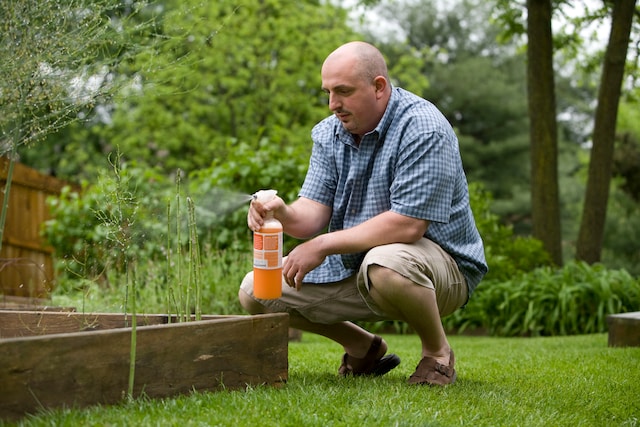In the world of agriculture, we’ve witnessed the evolution from conventional farming to organic practices, and now we have a new buzzword: residue-free farming. So, what exactly is this farming all about? Well, it revolves around minimizing the residue found in our food. But hold on, what does “residue” mean in this context? And does it only apply to food, or does it extend to plants and soil too?
Don’t worry, I know it can be a bit confusing, but fear not! I’ll break it down for you in the next 5-10 minutes as you dive into this enlightening article. Get ready to unravel the mysteries of residue-free farming!
Table of Contents
What is Residue-Free Farming?

In recent years, the agricultural industry has witnessed a growing interest in residue-free farming—a method that prioritizes sustainable practices and eliminates or minimizes the presence of chemical residues in crops. This article aims to provide a comprehensive overview of this farming, its techniques, and the benefits it offers over conventional chemical farming methods. By understanding the principles and practices of this farming, we can pave the way for a healthier, more environmentally friendly approach to food production.
Coming back to what is it all about, residue-free farming, also known as chemical residue-free farming or low-residue farming, focuses on cultivating crops with the limited or no use of synthetic pesticides, herbicides, or chemical fertilizers. The primary goal is to reduce the presence of harmful residues in agricultural produce, ensuring consumer safety and environmental sustainability.
What is the “Residue” here?

In conventional farming, the excessive use of chemical pesticides results in residues that can be harmful to human health. To address this issue, the government has established maximum residue limits (MRL) for pesticide residues in consumable produce. However, these measures solely focus on the safety of the end product for human consumption.
Meanwhile, the impact on the soil that receives chemical fertilizers and the plants exposed to toxic pesticides is often overlooked. Although the term “residue-free” in the market implies that the produce has pesticide residues below the MRL, I believe it should encompass a broader perspective, encompassing the well-being of the soil, plants, produce, and the overall environment.
Techniques and Practices of Residue-Free Farming

Integrated Pest Management (IPM)
Residue-free farmers employ IPM techniques, which involve monitoring and controlling pests by promoting natural predators, implementing crop rotation, using trap crops, employing physical barriers and using biodegradable pesticides. This reduces the dependence on chemical pesticides and minimizes residues in crops.
Organic and Natural Inputs
This farming method relies more on organic and natural inputs, such as compost, manure, and biofertilizers, to enhance soil fertility and provide essential nutrients to crops. These inputs are free from chemical contaminants, ensuring the production of residue-free crops.
Crop Rotation and Diversity
Crop rotation helps to break pest and disease cycles, enhance soil health, and reduce the need for chemical interventions. They also encourage crop diversity, which improves ecosystem resilience and minimizes the risk of pests and diseases spreading rapidly.
Precision Farming Techniques
Utilizing modern technologies like precision agriculture, residue-free farmers optimize the use of water, nutrients, and other resources. This targeted approach reduces wastage and environmental impact while promoting crop health and productivity.
Hold on a second! Are you getting confused between organic farming and residue-free farming? Here’s the deal: organic food is produced by the complete avoidance of chemicals like pesticides and fertilizers, while residue one takes a slightly different approach.
In this farming, the emphasis is on using fewer chemicals rather than completely eliminating them. So, the key difference lies in the quantity of chemicals used. Now that we’ve cleared that up, let’s dive into the fascinating world of residual-free farming and explore how it is better than organic farming.
Benefits of Residue-Free Farming

Residue-free farming offers several significant advantages over conventional chemical farming practices. In this section, we will explore the key reasons that make this farming a better choice for farmers, consumers, and the environment.
Healthier Food
One of the primary benefits of residual-free farming is the production of healthier and safer food. By eliminating or minimizing the use of synthetic pesticides, herbicides, and chemical fertilizers, farmers reduce the risk of chemical residues in crops. These residues can have detrimental effects on human health, potentially causing allergies, hormone disruption, and even long-term health problems. Residual-free farming prioritizes consumer safety by providing produce that is free from harmful chemical residues.
Environmental Sustainability
Residue-free farming practices contribute to environmental sustainability and conservation. Chemical fertilizers and pesticides used in conventional farming can leach into soil and water sources, leading to pollution and negative impacts on ecosystems. Residual-free farming, on the other hand, minimizes these environmental risks. By utilizing organic and natural inputs, crop rotation, and integrated pest management, residue-free farmers protect soil quality, preserve biodiversity, and maintain the health of surrounding ecosystems. This approach promotes the long-term sustainability of agriculture, ensuring the availability of fertile land and clean water for future generations.
Soil Health and Fertility
This farming method focuses on building and maintaining soil health. The use of organic inputs, such as compost, manure, and biofertilizers, enriches the soil with essential nutrients and promotes beneficial microbial activity. This enhances soil structure, nutrient availability, and water retention capacity. Healthy soils are more resilient to erosion, better at retaining moisture during droughts, and support optimal plant growth. Over time, residue-free farming leads to improved soil health, making the land more productive and sustainable.
Biodiversity Preservation
Residue-free farming practices encourage biodiversity by creating a favourable environment for beneficial insects, birds, and microorganisms. By avoiding the use of chemical pesticides, farmers protect natural predators and pollinators, which play a crucial role in maintaining ecosystem balance. These organisms help control pests naturally, reducing the reliance on chemical interventions. Residual-free farms often have higher levels of biodiversity, contributing to a healthier and more resilient agricultural ecosystem.
Market Demand and Premium Prices
With increasing consumer awareness and demand for sustainable and organic food, residue-free farming provides farmers with a competitive advantage. Consumers are willing to pay premium prices for residual free produce due to its perceived quality, safety, and environmental benefits. By adopting this farming practice, farmers can tap into these niche markets, expanding their customer base and generating higher profits. This economic incentive encourages farmers to transition towards more sustainable agricultural practices.
Long-term Cost Savings
While transitioning to residue-free farming may require initial investments in training, organic inputs, and alternative pest control methods, it can lead to long-term cost savings. By reducing the reliance on expensive synthetic chemicals, farmers can lower their input costs. Moreover, residual-free farming promotes soil health, reducing the need for excessive fertilization. Improved water management through precision farming techniques also contributes to cost savings. Over time, this farming can result in a more economically sustainable farming system.
In conclusion, residue-free farming offers numerous advantages over conventional chemical farming practices. It prioritizes consumer health and safety by providing produce free from harmful chemical residues. Additionally, residual-free farming promotes environmental sustainability by preserving soil health, biodiversity, and water quality. The market demand for residue-free produce and potential cost savings further enhance the appeal of this farming approach. By adopting these farming practices, farmers can contribute to a healthier future for both people and the planet.
Challenges of Residue-Free Farming

While residue-free farming offers numerous benefits, it also comes with its fair share of challenges. Understanding these challenges and identifying potential solutions is crucial for the successful implementation and widespread adoption of farming practices. Let’s explore some of the key challenges and potential solutions.
Major Challenges of Residual Free Farming
Pest and Disease Management
One of the main challenges in residue-free farming is effectively managing pests and diseases without relying on chemical pesticides. Integrated Pest Management (IPM) techniques can provide effective solutions. These include implementing crop rotation, using trap crops, encouraging natural predators, and employing physical barriers to control pests. Research and farmer training programs can help disseminate knowledge about IPM practices and empower farmers with effective pest and disease management strategies.
Knowledge and Education
Transitioning to this farming requires a solid understanding of sustainable agricultural practices and the available alternatives to synthetic chemicals. Lack of knowledge and education among farmers can hinder the adoption of residue-free farming practices. Government agencies, agricultural universities, and NGOs can play a crucial role in providing training programs, workshops, and extension services to educate farmers about residual-free farming techniques. Farmer-to-farmer knowledge exchange and demonstration farms can also facilitate learning and encourage the adoption of these practices.
Access to Resources
Farmers transitioning to residue-free farming may face challenges in accessing organic inputs, precision farming technologies, and alternative pest control methods. These resources may be relatively expensive or not readily available in some regions. To address this challenge, governments, agricultural institutions, and NGOs can provide financial assistance, subsidies, and technical support to farmers. Creating local networks and cooperatives can help farmers access affordable organic inputs, share resources, and collectively invest in precision farming technologies.
Other Challenges Associated With Residual-Free Farming
Certification and Market Infrastructure
Obtaining certification for residue-free farming can be a complex process, requiring compliance with specific standards and regulations. A lack of proper certification systems and market infrastructure can limit the market opportunities for residue-free farmers. Governments and agricultural organizations can support the development of certification programs tailored to residual-free farming practices. Establishing residue testing facilities and reliable supply chains can ensure the traceability and authenticity of residual-free produce, facilitating its access to premium markets.
Transition Period and Farm Viability
Transitioning from conventional chemical farming to residue-free practices often involves a period of adjustment and potential yield fluctuations. Farmers may face financial and operational challenges during this transition period. Providing financial support, incentives, and subsidies can help farmers sustain their operations and ensure the economic viability of residual-free farming. Collaborative initiatives and networks can also offer peer support, knowledge sharing, and market access to help farmers navigate this transitional phase successfully.
Consumer Awareness and Demand
Despite the growing interest in sustainable agriculture, some consumers may still be unaware of the benefits and importance of this farming. Educating consumers about the advantages of residue-free produce, its impact on health and the environment, and the significance of supporting sustainable farming practices can drive demand and create a market pull. Marketing campaigns, consumer education programs, and collaboration with retailers and consumer advocacy groups can help raise awareness and generate demand for residue-free products.
In conclusion, addressing the challenges of this farming requires a multi-faceted approach involving education, training, access to resources, certification systems, market infrastructure, and consumer awareness. By implementing supportive policies, providing technical assistance, and fostering collaboration between stakeholders, we can overcome these challenges and promote the widespread adoption of residue-free farming practices. The collective efforts of farmers, governments, agricultural institutions, and consumers are crucial in realizing the full potential of residual-free farming for a sustainable and healthier future.
Bottom Line…
Residue-free farming presents a promising alternative to conventional chemical farming, promoting sustainability, food safety, and environmental stewardship. By adopting IPM techniques, organic inputs, and precision farming, farmers can reduce reliance on synthetic chemicals and produce residue-free crops. The numerous benefits, such as healthier food, improved soil health, and enhanced ecosystem resilience, make residual-free farming an attractive option for both farmers and consumers. Embracing this transformative agricultural approach can lead us toward a more sustainable and resilient future.

